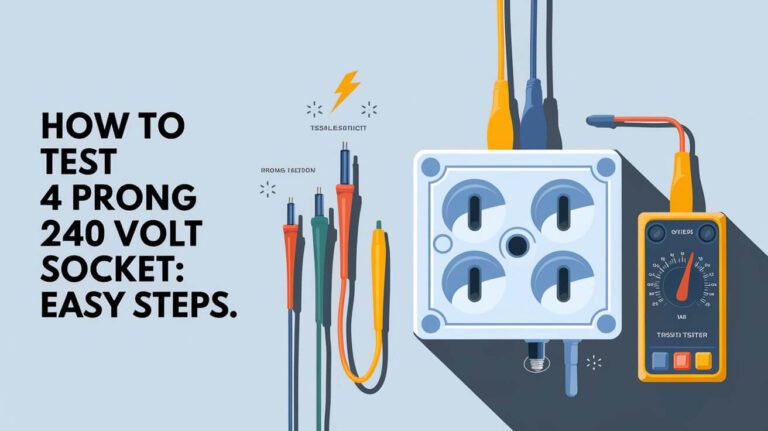
Working with an oscilloscope means you need to set the volt/div correctly. This setting shows how many volts each division on the screen represents. It’s key for precise voltage measurement. Most scopes have 8-10 vertical divisions, and the volt/div knob lets you choose from 2mV/div to 5V/div, like on the GA1102 display.
To start analyzing signals, knowing about volt/div is a must. It affects how signals are shown on the screen. This is important for understanding waveforms.
The volt/div control is a critical part of oscilloscope settings. Setting it right is essential for accurate voltage measurement. By adjusting volt/div, you can improve your signal display and understand waveform characteristics better.
Whether you’re looking at a 500Hz square wave or multiple inputs at once, knowing volt/div is key. It helps you make precise measurements and use your oscilloscope to its fullest.
Basics of Oscilloscope Voltage Measurements
Oscilloscopes are key for checking voltage in electronic circuits. The vertical scale shows voltage, with each line meaning a certain voltage. Most oscilloscopes have 8-10 lines, making it easy to measure voltage.
Voltage Division Fundamentals
The basics of voltage division are simple. Each line on the vertical scale equals a certain voltage. For instance, if the CH1 VOLT/DIV knob is at 1 V, each line is 1 volt. This makes it easy to measure and calculate voltages.
Reading the Vertical Scale
It’s important to know how to read the vertical scale. Each square on the screen is 1 centimeter, and each smaller line is 0.2 volts. By changing the VOLT/DIV knob, you can measure voltages more precisely.
Units and Their Significance
Understanding voltage measurement units is key. The most common are volts (V), millivolts (mV), and microvolts (μV). Knowing these units helps in making accurate measurements and calculations.
| Unit | Symbol | Description |
|---|---|---|
| Volts | V | Base unit of voltage |
| Millivolts | mV | One-thousandth of a volt |
| Microvolts | μV | One-millionth of a volt |
Components of the Vertical System
The vertical system of an oscilloscope is key for precise waveform adjustment and measurement. It includes the vertical position and volts/div knob. These work together to adjust the waveform display. The vertical position places the waveform on the screen, while the volts/div knob changes the scale.
For example, a 5 volts/div setting means each vertical division shows 5 volts. This makes the screen show up to 40 volts from bottom to top.
Knowing the vertical system is vital for precise measurements. The volts/div knob acts as a scale factor. The maximum voltage shown on the screen is found by multiplying the volts/div setting by the vertical divisions.
Oscilloscopes usually have 8-10 vertical divisions. The volts/div knob can choose a scale from 2mV/div to 5V/div. This range lets users display signals from about 4 millivolts to 40 volts accurately.
Some important things to remember about the vertical system are:
- Vertical position: This controls where the waveform is placed on the screen, allowing for precise adjustment.
- Volts/div knob: This changes the scale of the waveform, making it easier to measure signal levels.
- Waveform adjustment: The combination of vertical position and volts/div knob lets users adjust the waveform display precisely. This is important for accurate measurement and analysis of signals.
The vertical system of an oscilloscope is essential for accurate waveform adjustment and measurement. By understanding the vertical position, volts/div knob, and waveform adjustment, users can make precise measurements. This helps them gain valuable insights into their signals.
Proper Signal Connection Methods
Working with an oscilloscope requires careful signal connection methods. This ensures signal integrity. You need to pick the right oscilloscope probes, think about ground lead connections, and choose the right input coupling options. The probe type greatly affects measurement accuracy, with passive and active probes being common.
For reliable measurements, knowing about input coupling options is key. AC coupling is for AC signals, while DC coupling is for DC signals. Also, grounding the oscilloscope properly is important for safety and to avoid noise.
Some important things to keep in mind for signal connection methods include:
- Selecting the right oscilloscope probes for the specific application
- Ensuring proper ground lead connections to prevent noise interference
- Choosing the appropriate input coupling options for the type of signal being measured
Following these tips and using the right tools, like oscilloscope probes, you can ensure signal integrity. This is very important in fields where signal quality matters a lot, like in electronic device development and testing.
| Probe Type | Description | Application |
|---|---|---|
| Passive Probes | Simple, low-cost probes | General-purpose measurements |
| Active Probes | Amplified probes for high-frequency signals | High-speed measurements |
How To Determine Volt/Div On Oscilloscope: Step-by-Step Process
To find the right volt/div setting on an oscilloscope, you need to look at the signal’s amplitude. Start by setting the volts/div knob to a high value, like 5 V/div or 10 V/div. This helps avoid overwhelming the screen with too big of signals.
Adjust the volt/div setting and watch how the waveform changes. Lower the volt/div setting to see more of the signal’s amplitude. Go from 10 V/div down to 2 V/div to get more precise measurements. This will help you find the best volt/div setting for your signal.
When choosing the right volt/div setting, consider a few things:
- Signal type: Different signals need different volt/div settings. For instance, a sine wave might need a lower setting than a square wave.
- Signal amplitude: The size of the signal affects the volt/div setting. Big signals might need a higher setting.
- Waveform display: A clear waveform display is key for accurate measurements. Adjust the volt/div setting to get a detailed view.
Following these tips and practicing with different signals, you can improve your oscilloscope display. Remember to keep adjusting the volt/div setting and Timebase for the best signal display.
| Volt/Div Setting | Signal Amplitude | Waveform Display |
|---|---|---|
| 5 V/div | Large amplitude signals | Overview of signal shape |
| 2 V/div | Small amplitude signals | Detailed view of signal shape |
| 1 V/div | Low amplitude signals | Highly detailed view of signal shape |
Calibrating Your Voltage Measurements
Calibrating your oscilloscope is key for accurate measurements. Many oscilloscopes have built-in tools for this purpose. Regular calibration is vital for trustworthy results in science and engineering.
Using Built-in Calibration Tools
Most oscilloscopes have tools for easy calibration. These tools include automatic calibration, which fine-tunes the oscilloscope’s settings. Always check the oscilloscope’s manual for the right steps and timing for calibration.
External Reference Standards
For even more precise calibration, use external reference standards. These standards offer a known voltage, helping to calibrate your oscilloscope accurately. Commercial calibration services can also offer precise calibration. By combining these methods, you can ensure your oscilloscope’s measurements are reliable. This is essential in fields like electronics and engineering, where precision is critical.
Signal Optimization Techniques
To get the best out of your oscilloscope, it’s key to know its different modes. Modes like sample, peak detect, and average affect how clear and clean your signals are. Choosing the right mode helps you understand your signals better.
Improving your signal display involves tweaking the time base and range. You can also use mathematical and reference channels for complex tasks. For instance, you can find a signal’s frequency spectrum or compare phase shifts between signals.
Other ways to enhance your signals include:
- Using pre-trigger viewing to capture events before they happen
- Applying noise reduction algorithms to boost signal quality
- Using specialized oscilloscopes, like digital phosphor oscilloscopes, for complex waveforms
Mastering these techniques and understanding your oscilloscope’s features, you can enhance your signal display. This leads to clearer waveforms, reduced noise, and better signal quality.
Common Voltage Measurement Errors
Working with oscilloscopes requires high accuracy in voltage measurements. Several errors can impact this accuracy. It’s vital to troubleshoot these issues for reliable results. Common problems include probe issues, bandwidth limits, and ground loop effects.
Understanding these errors is key. Here are some important points to consider:
- Probe compensation: Wrong settings can cause inaccurate readings. Proper troubleshooting is needed.
- Bandwidth limitations: The oscilloscope’s bandwidth affects high-frequency signals. Choose a scope with enough bandwidth for your needs.
- Ground loop effects: These can introduce noise and reduce accuracy. Good grounding is essential.
Knowing these common errors and how to fix them can improve your measurements. Effective troubleshooting is key to solving these problems. This way, you can get more accurate results.
| Error Source | Description | Mitigation Technique |
|---|---|---|
| Probe Compensation | Inaccurate probe compensation | Adjust probe compensation settings |
| Bandwidth Limitations | Insufficient bandwidth | Select oscilloscope with sufficient bandwidth |
| Ground Loop Effects | Noise introduction due to ground loops | Implement proper grounding techniques |
Advanced Voltage Analysis Methods
When we do voltage analysis, looking at signal characteristics is key. This includes peak-to-peak measurements and waveform parameters. These details give us insights into how the signal behaves and help spot problems. Oscilloscopes make it easier to analyze these complex signals by doing automated measurements like peak-to-peak and RMS calculations.
To check signal swing, peak-to-peak measurements are essential. They show the difference between the highest and lowest voltage levels of a signal. This helps engineers see the signal’s strength and find out if it’s clipped or distorted. Also, knowing the frequency and amplitude of a waveform is important for analyzing signals.
Peak-to-Peak Measurements
Peak-to-peak measurements help us check signal quality and find issues. By looking at these measurements, engineers can see the signal’s strength and find out if it’s clipped or distorted. Voltage analysis also looks at signal characteristics like waveform parameters to get accurate measurements.
RMS Calculations
RMS (Root Mean Square) calculations show the average voltage level of a signal. This is key for AC signal analysis because it gives a better idea of the signal’s power. By doing RMS calculations, engineers can make sure their voltage analysis is precise and reliable, considering signal characteristics and waveform parameters.
| Measurement | Description |
|---|---|
| Peak-to-Peak | Calculates the difference between the maximum and minimum voltage levels of a signal |
| RMS | Determines the average voltage level of a signal |
Practical Applications and Examples
Oscilloscopes are key in many fields like electronics, car repairs, and science. They help with real-world measurements. For example, in electronics, oscilloscopes measure the voltage when a motor starts. The voltage drops to 0.2V RMS at 60Hz.
In signal analysis, oscilloscopes capture short changes in signals. They also do math like finding the RMS and average values of signals. This is vital for accurate measurements. Using cursors on a scope helps measure waveforms precisely.
Here are some ways oscilloscopes are used:
- Electronics troubleshooting: using an oscilloscope to identify issues in a circuit
- Signal integrity analysis: using an oscilloscope to analyze the quality of a signal
- Power supply testing: using an oscilloscope to test the output of a power supply
Oscilloscopes offer deep insights into signal behavior and system performance. They help troubleshoot and optimize systems. By using oscilloscopes for measurements and analysis, users can better understand their systems. This leads to improved design and performance.
| Application | Description |
|---|---|
| Electronics Troubleshooting | Using an oscilloscope to identify issues in a circuit |
| Signal Integrity Analysis | Using an oscilloscope to analyze the quality of a signal |
| Power Supply Testing | Using an oscilloscope to test the output of a power supply |
Wrap-Up
As we wrap up our look at finding the volt/div on an oscilloscope, it’s clear this skill is key. It’s the base for getting good at oscilloscope proficiency and making accurate voltage measurements. Learning how to use the vertical scale opens up a world of detailed electronic analysis and fixing problems.
Keep learning and practicing to get better at voltage measurement skills. This will help you handle more complex circuits and tasks with ease. Remember, the oscilloscope is a powerful tool, and knowing how it works is essential to use it to its fullest.
Start your journey to becoming an oscilloscope expert. Let your curiosity lead you to a deeper understanding of this vital tool. With hard work and a desire to learn, you’ll soon be able to handle the challenges of electronic measurements with ease.
Commonly Asked Queries
What is the purpose of the volt/div setting on an oscilloscope?
The volt/div setting on an oscilloscope is key for accurate voltage readings. It sets the vertical scale and how the signal is shown. This affects how we understand and measure voltage levels.
How does the voltage division fundamentals work on an oscilloscope?
The vertical scale on an oscilloscope shows voltage levels. Knowing how voltage division works is vital for understanding the waveform and making accurate voltage measurements.
What are the key components of an oscilloscope’s vertical system?
The position and volts/div knobs adjust the waveform display. They impact how we see the signal and measure it. Mastering these controls is key for the oscilloscope’s best performance.
How should I connect signals to an oscilloscope?
Connecting signals right is critical. This includes choosing the right probes, ensuring grounding, and knowing about input coupling. It’s important for accurate measurements and avoiding mistakes.
What is the step-by-step process for determining the appropriate volt/div setting?
First, check the signal’s amplitude. Then, adjust the volt/div setting as needed. This process needs practice with different signals to get it right.
Why is calibration important for voltage measurements with an oscilloscope?
Calibration keeps voltage measurements accurate. It uses built-in features and external standards. Regular calibration is a must for good measurement practice.
What techniques can I use to optimize signal display and measurement?
Try different acquisition modes and reduce noise. Choose the best settings for your needs. This improves signal visualization and measurement accuracy.
What are some common pitfalls in voltage measurements with oscilloscopes?
Problems like probe issues, bandwidth limits, and ground loops can cause wrong readings. Knowing these pitfalls and how to fix them is key for reliable measurements.
What are some advanced voltage analysis techniques I can use?
Use peak-to-peak measurements and calculate RMS voltage. These techniques give deeper insights into signal characteristics. They’re useful in electronic analysis and troubleshooting.
Can you provide real-world examples of how to determine the appropriate volt/div setting?
Look at practical uses like electronics troubleshooting and signal integrity analysis. These examples help link theory to practice in choosing the right volt/div setting.




